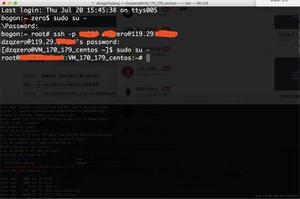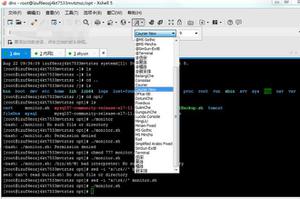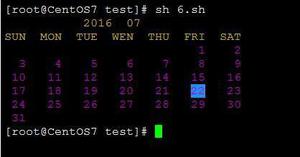C++实现分水岭算法(Watershed Algorithm)
分水岭分割方法(Watershed Segmentation),是一种基于拓扑理论的数学形态学的分割方法,其基本思想是把图像看作是测地学上的拓扑地貌,图像中每一点像素的灰度值表示该点的海拔高度,每一个局部极小值及其影响区域称为集水盆,而集水盆的边界则形成分水岭。分水岭的概念和形成可以通过模拟浸入过程来说明。在每一个局部极小值表面,刺穿一个小孔,然后把整个模型慢慢浸入水中,随着浸入的加深,每一个局部极小值的影响域慢慢向外扩展,在两个集水盆汇合处构筑大坝,即形成分水岭。
分水岭的计算过程是一个迭代标注过程。分水岭比较经典的计算方法是L. Vincent提出的。在该算法中,分水岭计算分两个步骤,一个是排序过程,一个是淹没过程。首先对每个像素的灰度级进行从低到高排序,然后在从低到高实现淹没过程中,对每一个局部极小值在h阶高度的影响域采用先进先出(FIFO)结构进行判断及标注。
分水岭变换得到的是输入图像的集水盆图像,集水盆之间的边界点,即为分水岭。显然,分水岭表示的是输入图像极大值点。因此,为得到图像的边缘信息,通常把梯度图像作为输入图像,即:
grad(f(x,y))=((f(x-1,y)-f(x+1,y))^2 + (f(x,y-1)-f(x,y+1))^2)^0.5
式中,f(x,y)表示原始图像,grad(.)表示梯度运算。
分水岭算法对微弱边缘具有良好的响应,图像中的噪声、物体表面细微的灰度变化,都会产生过度分割的现象。但同时应当看出,分水岭算法对微弱边缘具有良好的响应,是得到封闭连续边缘的保证的。另外,分水岭算法所得到的封闭的集水盆,为分析图像的区域特征提供了可能。
为消除分水岭算法产生的过度分割,通常可以采用两种处理方法,一是利用先验知识去除无关边缘信息。二是修改梯度函数使得集水盆只响应想要探测的目标。
为降低分水岭算法产生的过度分割,通常要对梯度函数进行修改,一个简单的方法是对梯度图像进行阈值处理,以消除灰度的微小变化产生的过度分割。即:
g(x,y)=max(grad(f(x,y)),gθ)
式中,gθ表示阈值。
程序可采用方法:用阈值限制梯度图像以达到消除灰度值的微小变化产生的过度分割,获得适量的区域,再对这些区域的边缘点的灰度级进行从低到高排序,然后在从低到高实现淹没的过程,梯度图像用Sobel算子计算获得。对梯度图像进行阈值处理时,选取合适的阈值对最终分割的图像有很大影响,因此阈值的选取是图像分割效果好坏的一个关键。缺点:实际图像中可能含有微弱的边缘,灰度变化的数值差别不是特别明显,选取阈值过大可能会消去这些微弱边缘。
下面用C++实现分水岭算法:
#define _USE_MATH_DEFINES
#include <cstddef>
#include <cstdlib>
#include <cstring>
#include <climits>
#include <cfloat>
#include <ctime>
#include <cmath>
#include <cassert>
#include <vector>
#include <stack>
#include <queue>
using namespace std;
typedef void GVVoid;
typedef bool GVBoolean;
typedef char GVChar;
typedef unsigned char GVByte;
typedef short GVInt16;
typedef unsigned short GVUInt16;
typedef int GVInt32;
typedef unsigned int GVUInt32;
typedef long long GVInt64;
typedef unsigned long long GVUInt64;
typedef float GVFloat32;
typedef double GVFloat64;
const GVBoolean GV_TRUE = true;
const GVBoolean GV_FALSE = false;
const GVByte GV_BYTE_MAX = UCHAR_MAX;
const GVInt32 GV_INT32_MAX = INT_MAX;
const GVInt32 GV_INT32_MIX = INT_MIN;
const GVInt64 GV_INT64_MAX = LLONG_MAX;
const GVInt64 GV_INT64_MIN = LLONG_MIN;
const GVFloat32 GV_FLOAT32_MAX = FLT_MAX;
const GVFloat32 GV_FLOAT32_MIN = FLT_MIN;
const GVFloat64 GV_FLOAT64_MAX = DBL_MAX;
const GVFloat64 GV_FLOAT64_MIN = DBL_MIN;
class GVPoint;
class GVPoint {
public:
GVInt32 x;
GVInt32 y;
public:
GVPoint() : x(0), y(0) { }
GVPoint(const GVPoint &obj) : x(obj.x), y(obj.y) { }
GVPoint(GVInt32 x, GVInt32 y) : x(x), y(y) { }
public:
GVBoolean operator ==(const GVPoint &right) const {
return ((x == right.x) && (y == right.y));
}
GVBoolean operator !=(const GVPoint &right) const {
return (!(x == right.x) || !(y == right.y));
}
};
/*
* <Parameter>
* <image> image data;
* <width> image width;
* <height> image height;
* <label out> image of labeled watersheds.
*/
GVVoid gvWatershed(
const GVByte *image,
GVInt32 width,
GVInt32 height,
GVInt32 *label)
{
// Local constants
const GVInt32 WSHD = 0;
const GVInt32 INIT = -1;
const GVInt32 MASK = -2;
const GVPoint FICT_PIXEL = GVPoint(~0, ~0);
// Image statistics and sorting
GVInt32 size = width * height;
GVInt32 *image_stat = new GVInt32[GV_BYTE_MAX + 1];
GVInt32 *image_space = new GVInt32[GV_BYTE_MAX + 1];
GVPoint *image_sort = new GVPoint[size];
::memset(image_stat, 0, sizeof (GVInt32) * (GV_BYTE_MAX + 1));
::memset(image_space, 0, sizeof (GVInt32) * (GV_BYTE_MAX + 1));
::memset(image_sort, 0, sizeof (GVPoint) * size);
for (GVInt32 i = 0; !(i == size); ++i) {
image_stat[image[i]]++;
}
for (GVInt32 i = 0; !(i == GV_BYTE_MAX); ++i) {
image_stat[i + 1] += image_stat[i];
}
for (GVInt32 i = 0; !(i == height); ++i) {
for (GVInt32 j = 0; !(j == width); ++j) {
GVByte space = image[i * width + j];
GVInt32 index = image_stat[space] - (++image_space[space]);
image_sort[index].x = j;
image_sort[index].y = i;
}
}
for (GVInt32 i = GV_BYTE_MAX; !(i == 0); --i) {
image_stat[i] -= image_stat[i - 1];
}
// Watershed algorithm
GVPoint *head = image_sort;
GVInt32 space = 0;
GVInt32 *dist = new GVInt32[size];
GVInt32 dist_cnt = 0;
GVInt32 label_cnt = 0;
std::queue<GVPoint> queue;
::memset(dist, 0, sizeof (GVInt32) * size);
::memset(label, ~0, sizeof (GVInt32) * size);
for (GVInt32 h = 0; !(h == (GV_BYTE_MAX + 1)); ++h) {
head += space;
space = image_stat[h];
for (GVInt32 i = 0; !(i == space); ++i) {
GVInt32 index = head[i].y * width + head[i].x;
GVInt32 index_l = ((head[i].x - 1) < 0) ? -1 : ((head[i].x - 1) + head[i].y * width);
GVInt32 index_r = !((head[i].x + 1) > width) ? -1 : ((head[i].x + 1) + head[i].y * width);
GVInt32 index_t = ((head[i].y - 1) < 0) ? -1 : (head[i].x + (head[i].y - 1) * width);
GVInt32 index_b = !((head[i].y + 1) > height) ? -1 : (head[i].x + (head[i].y + 1) * width);
label[index] = MASK;
if ( (!(index_l < 0) && !(label[index_l] < WSHD))
|| (!(index_r < 0) && !(label[index_r] < WSHD))
|| (!(index_t < 0) && !(label[index_t] < WSHD))
|| (!(index_b < 0) && !(label[index_b] < WSHD))) {
dist[index] = 1;
queue.push(head[i]);
}
}
dist_cnt = 1;
queue.push(FICT_PIXEL);
while (GV_TRUE) {
GVPoint top = queue.front();
GVInt32 index = top.y * width + top.x;
GVInt32 index_l = ((top.x - 1) < 0) ? -1 : ((top.x - 1) + top.y * width);
GVInt32 index_r = !((top.x + 1) > width) ? -1 : ((top.x + 1) + top.y * width);
GVInt32 index_t = ((top.y - 1) < 0) ? -1 : (top.x + (top.y - 1) * width);
GVInt32 index_b = !((top.y + 1) > height) ? -1 : (top.x + (top.y + 1) * width);
queue.pop();
if (top == FICT_PIXEL) {
if (queue.empty()) break;
else {
++dist_cnt;
queue.push(FICT_PIXEL);
top = queue.front();
queue.pop();
}
}
if (!(index_l < 0)) {
if ((dist[index_l] < dist_cnt) && !(label[index_l] < WSHD)) {
if (label[index_l] > WSHD) {
if ((label[index] == MASK) || (label[index] = WSHD)) label[index] = label[index_l];
else if (!(label[index] == label[index_l])) label[index] = WSHD;
} else if (label[index] == MASK) {
label[index] = WSHD;
}
} else if ((label[index_l] == MASK) && (dist[index_l] == 0)) {
dist[index_l] = dist_cnt + 1;
queue.push(GVPoint(top.x - 1, top.y));
}
}
if (!(index_r < 0)) {
if ((dist[index_r] < dist_cnt) && !(label[index_r] < WSHD)) {
if (label[index_r] > WSHD) {
if ((label[index] == MASK) || (label[index] = WSHD)) label[index] = label[index_r];
else if (!(label[index] == label[index_r])) label[index] = WSHD;
} else if (label[index] == MASK) {
label[index] = WSHD;
}
} else if ((label[index_r] == MASK) && (dist[index_r] == 0)) {
dist[index_r] = dist_cnt + 1;
queue.push(GVPoint(top.x + 1, top.y));
}
}
if (!(index_t < 0)) {
if ((dist[index_t] < dist_cnt) && !(label[index_t] < WSHD)) {
if (label[index_t] > WSHD) {
if ((label[index] == MASK) || (label[index] = WSHD)) label[index] = label[index_t];
else if (!(label[index] == label[index_t])) label[index] = WSHD;
} else if (label[index] == MASK) {
label[index] = WSHD;
}
} else if ((label[index_t] == MASK) && (dist[index_t] == 0)) {
dist[index_t] = dist_cnt + 1;
queue.push(GVPoint(top.x, top.y - 1));
}
}
if (!(index_b < 0)) {
if ((dist[index_b] < dist_cnt) && !(label[index_b] < WSHD)) {
if (label[index_b] > WSHD) {
if ((label[index] == MASK) || (label[index] = WSHD)) label[index] = label[index_b];
else if (!(label[index] == label[index_b])) label[index] = WSHD;
} else if (label[index] == MASK) {
label[index] = WSHD;
}
} else if ((label[index_b] == MASK) && (dist[index_b] == 0)) {
dist[index_b] = dist_cnt + 1;
queue.push(GVPoint(top.x, top.y + 1));
}
}
}
for (GVInt32 i = 0; !(i == space); ++i) {
GVInt32 index = head[i].y * width + head[i].x;
dist[index] = 0;
if (label[index] == MASK) {
label_cnt++;
label[index] = label_cnt;
queue.push(head[i]);
while (!queue.empty()) {
GVPoint top = queue.front();
GVInt32 index_l = ((top.x - 1) < 0) ? -1 : ((top.x - 1) + top.y * width);
GVInt32 index_r = !((top.x + 1) > width) ? -1 : ((top.x + 1) + top.y * width);
GVInt32 index_t = ((top.y - 1) < 0) ? -1 : (top.x + (top.y - 1) * width);
GVInt32 index_b = !((top.y + 1) > height) ? -1 : (top.x + (top.y + 1) * width);
queue.pop();
if (!(index_l < 0) && (label[index_l] == MASK)) {
queue.push(GVPoint(top.x - 1, top.y));
label[index_l] = label_cnt;
}
if (!(index_r < 0) && (label[index_r] == MASK)) {
queue.push(GVPoint(top.x + 1, top.y));
label[index_r] = label_cnt;
}
if (!(index_t < 0) && (label[index_t] == MASK)) {
queue.push(GVPoint(top.x, top.y - 1));
label[index_t] = label_cnt;
}
if (!(index_b < 0) && (label[index_b] == MASK)) {
queue.push(GVPoint(top.x, top.y + 1));
label[index_b] = label_cnt;
}
}
}
}
}
// Release resources
delete[] image_stat;
delete[] image_space;
delete[] image_sort;
delete[] dist;
}
以上是 C++实现分水岭算法(Watershed Algorithm) 的全部内容, 来源链接: utcz.com/z/333316.html






